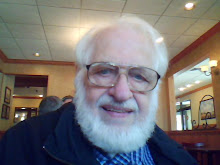Recent posts discussed the amount of matter equivalent to the energy need to accelerate a Toyota Corrola. Enen if my calculations are correct, which is doubtful, it is useless information. Obviously there is nothing in an automobile which can turn so small amount of matter into equivalent energy. This is done elsewhere in a nuclear reactor by the fission of radioactive isotopes. Even there, only a very small fraction of the mass becomes energy. The number of protons/neutrons remains the same. (This was true even in the atomic bomb.) To find out how much, you need to compare the atomic weight of the isotope to the total atomic weight of the decay products. [Way beyond me.]
Then there is a series of processes to convert heat to electricity and transmit to where it needs to be to charge the battery. There are energy losses along the way.
Oops! The Corolla is not an electric car.
Friday, April 20, 2012
Saturday, April 14, 2012
Silly Example
What is the equivalent energy in grams required to accelerate a car to sixty miles per hour in 15 seconds.
Data:
The car weighs 2800 pounds.
One pound equals 453.59 grams.
One mile equals 1.6 kilometers.
The speed of light is 300,000 kilometers per second.
Calculation:
(2800 x 453.59 x 1.6 / (60 x 9)) x 10 ^ -10
= 3.768 x 10 ^ -7
= 0.0000002768 grams
Next blog will cover why this is useless information.
Data:
The car weighs 2800 pounds.
One pound equals 453.59 grams.
One mile equals 1.6 kilometers.
The speed of light is 300,000 kilometers per second.
Calculation:
(2800 x 453.59 x 1.6 / (60 x 9)) x 10 ^ -10
= 3.768 x 10 ^ -7
= 0.0000002768 grams
Next blog will cover why this is useless information.
Friday, April 13, 2012
Dimensions
I was taught in university science classes that the dimensions on the left side of an equation should match the dimensions on the right. I had trouble applying this to Einsteins equation because energy is expressed in so many ways (joules, foot-pounds, kilowatt hours). I finally figured out that the right way to look at it is energy = force times distance and force = mass times acceleration and acceleration = distance divided by time squared. Combining these gives energy = mass times distance squared divided by time squared, which, of course, matches the dimensions on the right side of the equation.
My next blog will give an example.
My next blog will give an example.
Labels:
acceleration,
dimensions,
distance,
force,
mass and energy,
time
Saturday, April 7, 2012
Another Recommendation
NO They Can't by John Stossel. When I finish reading my copy I will give it to my liberal nephew, Mike, who, of course, won't read it. Maybe it is because he has never [well, almost never] worked in the private sector. Hi, Kevin.
Subscribe to:
Comments (Atom)
